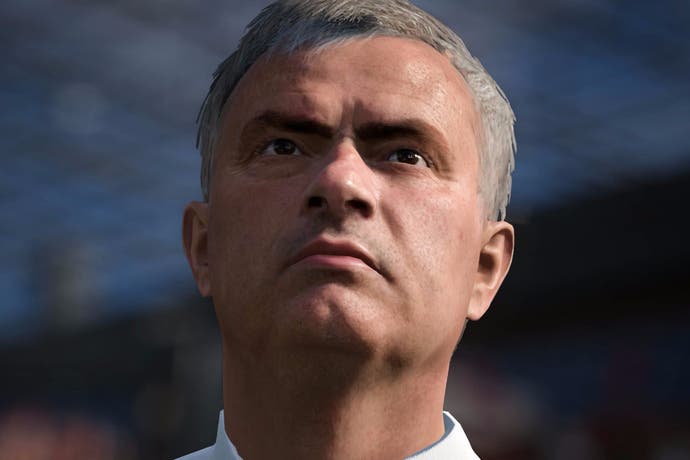FIFA 17: How the Frostbite engine improves visuals
Digital Foundry plays FIFA 16 and 17 simultaneously - with the same controller.
FIFA 17 moves to the Frostbite engine this year, the same tech as seen in Battlefield One and the upcoming Mass Effect. It's a departure from the Ignite engine used between FIFA 14 and 16 - introduced to show off the capabilities of PlayStation 4 and Xbox One - and allows for a big improvement in the series' lighting and atmospheric effects. We pit the two engines against each other here to see exact extent of the change, and if this is the series visual overhaul we've been waiting for.
The setup is simple enough. We use one gamepad to control two games simultaneously in real-time: one machine running FIFA 16 with Ignite, and on the other it's the FIFA 17 demo with Frostbite. Of course we can expect tweaks between this demo and the final version, but as a sign of the improvements this engine brings, our 'dual-wield' control method shines a light on the areas given the most work. However, the fact the core gameplay, camera, menu systems and animations are matched so closely using the same input is clear a sign there's still a lot in common between the two games. Despite the engine switch, it's amazing how similar FIFA 17 is to its predecessor in terms of control mechanics - though this thankfully makes a comparison like this possible.
Side-by-side, we can see places like Stamford Bridge and Centurylink Field (the two stadia available in this taster) have a few light changes in geometry and materials. New fences are added, support structures now line the roofing, and glass materials are swapped in to allow sun to shine through certain stands. Don't expect a colossal overhaul here; the revised grounds were a bullet-point feature of last year's game, but they do transfer over to the Frostbite engine with a few small embellishments in FIFA 17.
It's the lighting model that largely sets this year's FIFA apart from the last. FIFA 17 now makes use of volumetric light effects, filling the air above the stands in a more realistic way than before. It means floodlight beams diffuse properly into the space above the pitch, as you'd expect in a real game, whereas before we made do with a basic lens flare on each lamp. The change is best seen in evening matches at Stamford Bridge, and though arguably the effect is a tad overdone for the sake of showing off this new tech, it does help to add a much-needed sense of volume to the air.
The new lighting has a knock-on effect for the series' physically-based materials, still used in FIFA 17 to match the real-life properties of grounds and players. Pitches are less saturated compared to FIFA 16, and vibrancy is dialled back in favour of a lighter tone more accurate to what we might see on a TV broadcast. It takes some adjusting to, but the benefits elsewhere are clear; lighting effects are improved, and Frostbite even boosts the quality of shadows across the floor in day-time matches - notably during a 3pm kickoff where shadows fall from the roof.
But what about the players themselves? The new lighting transforms the colour tone across skin, often resulting in a very different look to a lineup. Inevitably, some of the bigger names get the usual update from FIFA 16 to reflect how they look a year on. Christiano Ronaldo and James Rodriguez are both updated with wider, older looking faces alongside a handful of others, though the majority of players transfer directly across to FIFA 17 as they appeared before. More often than not, it's the changes in lighting that produce the grander changes in direct comparison.


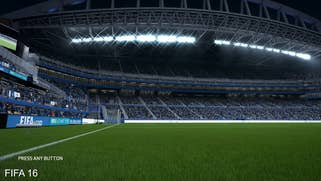
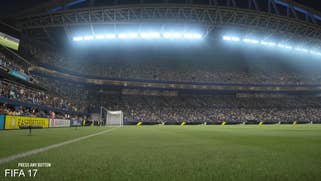
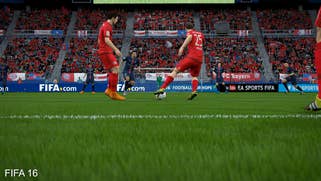



Elsewhere, there are a lot of reused animations from the last few games. Between the running, tricks, or the varieties of shots, there's a lot of overlap between FIFA 16 and 17, and as our video comparison shows, it's possible to sync most movements down to the exact frame. There are new additions too, of course, like more varied handshakes, match goal celebrations, and pre-match huddles. The inclusion of big-name managers is another big one here, and probably the area in most need of work. The series is a goldmine for uncanny valley moments, and the game's robotic interpretation of José Mourinho strutting the sidelines simply doesn't match the animation quality of the players themselves. It's a shame given the quality of FIFA 17's very best models, like the game's take on Zlatan Ibrahimović.
To take stock, we have improved lighting, shadows, and tweaked stadiums and players, but the other benefit of moving to Frostbite engine is a native suite of post-processing tricks. We have improved depth of field, bloom, and a fishbowl-style lens during opening panning shots of each stadium here. The depth of field effect stands out in particular during FIFA 17's replays, where the grass in the foreground and stands in the back are better at mimicking a real camera's focal range. DOF was applied to limited results in the Ignite-driven FIFA 16, but here we have an implementation that takes it a step further, blending between depths in a visibly different way.
Frostbite also brings in another much-improved version of motion blur for replays and cut-scenes. As before, the Ignite engine in FIFA 16 already had its own sample-based implementation, but it produced obvious banding artefacts - trails behind anything in motion. The new and improved effect in FIFA 17 is smoother, and blends the samples together more elegantly while the camera is at full velocity while orbiting freely in replays. It's another example of Frostbite's post-processing benefitting the series, and for a football sim it does help add a sense of realism.
It's worth noting the native 1080p resolution used for the PS4 version of our FIFA 17 demo captures is now backed by a different approach to anti-aliasing. In this case we suspect the more taxing, multi-sample AA approach of previous games is gone, and swapped for the post-process FXAA we see in Frostbite games like Battlefield One. It'd make sense given the lack of MSAA-based games using this engine on console so far, and would certainly help in terms of performance for these versions.
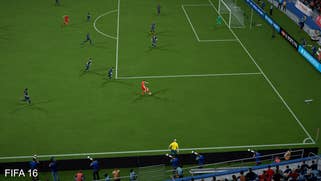
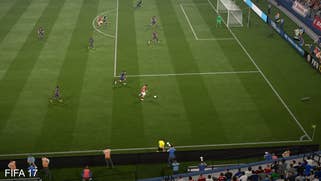


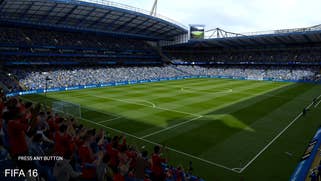


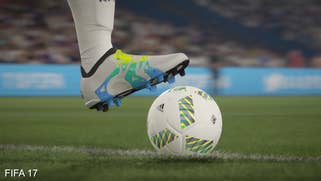
Curiously, all the frame-rate targets we saw on the Ignite engine FIFAs hold true in this edition as well. That means a 60fps target during actual gameplay from the regular top-down camera, but also a 30fps ceiling for any replays, cut-scenes, or set-pieces. It's business as usual in this sense, though the move to Frostbite has added an adaptive v-sync to the equation, allowing for tearing at the top third of the screen should a frame fall out of its render-time budget.
While FIFA 17 does bear a lot of similarities to its predecessor, especially in animation, to the last game, the Frostbite engine helps to enhance the atmosphere in several key departments, with improved lighting, and an overhauled post-process pipeline being the main advances. We were disappointed in FIFA 16 for being too modest on that front last year, an iterative release that didn't justify the price-tag if you owned the last game.
While not the complete revolution we had in mind, with so much of the series' template fixed rigidly in place, it's hard not to be impressed by some of the changes EA's managed to bring to FIFA 17. Even as just a demo, this latest FIFA is much more like what we were expecting, and it'll be interesting to see how the game's intriguing new story mode ends up using the new technology as well.
